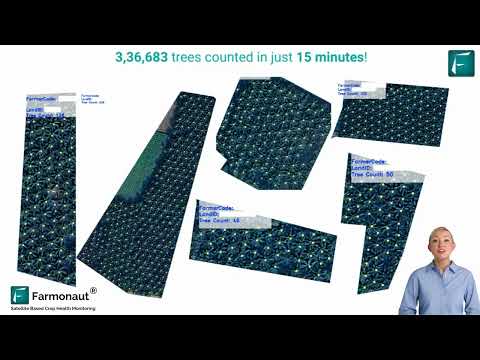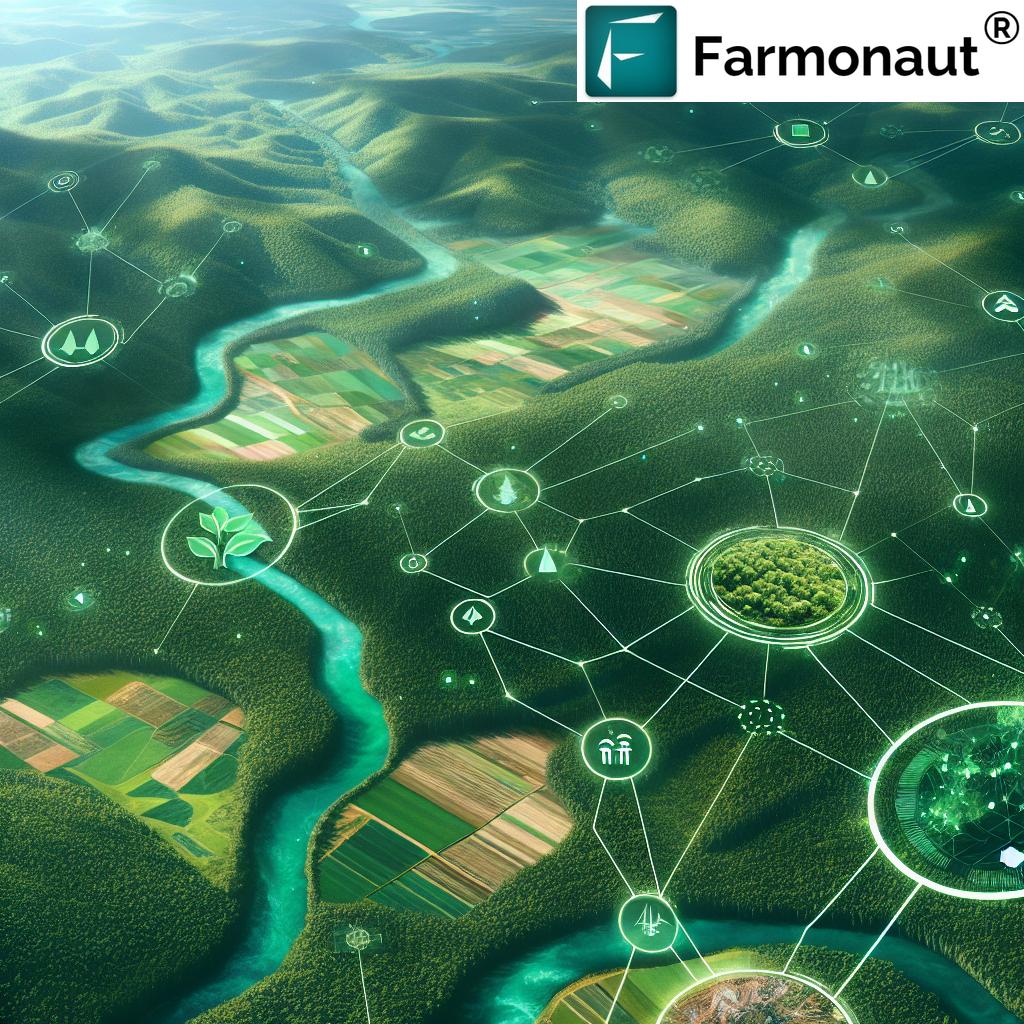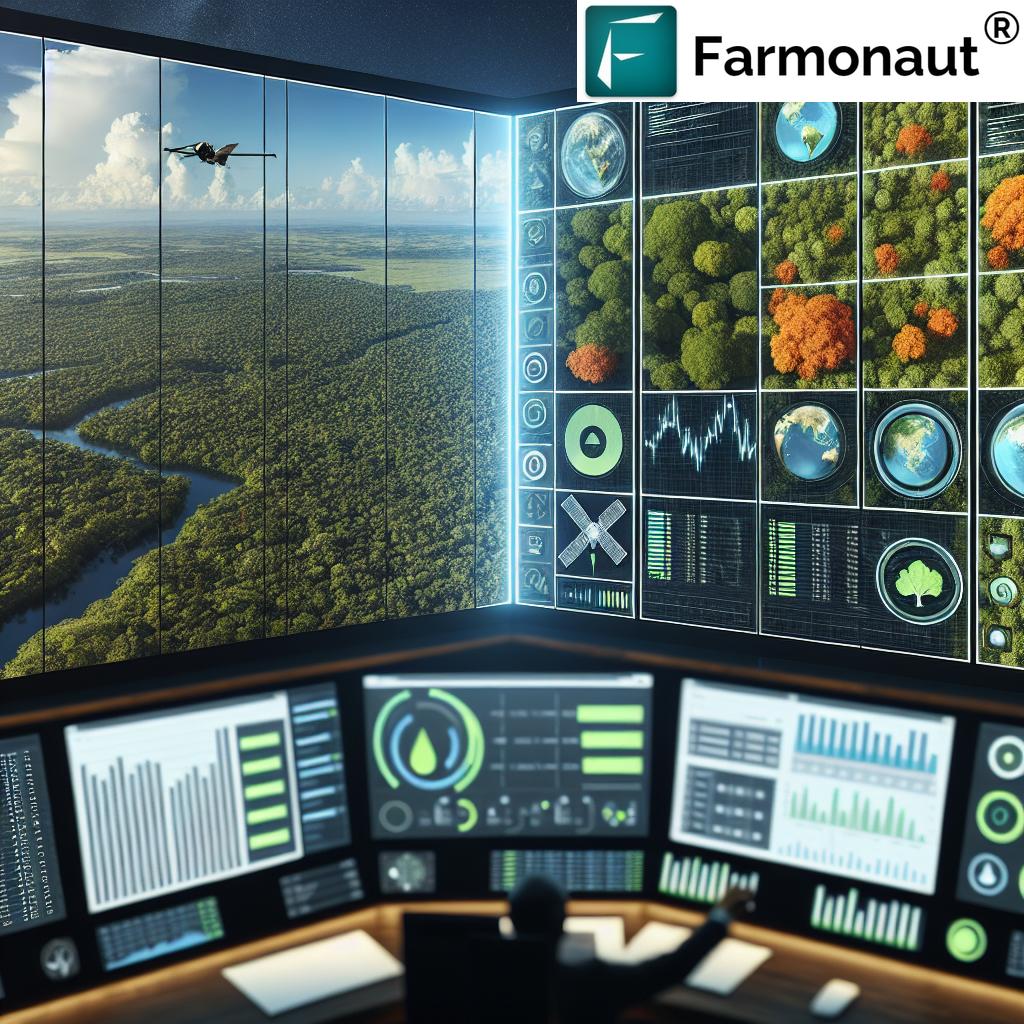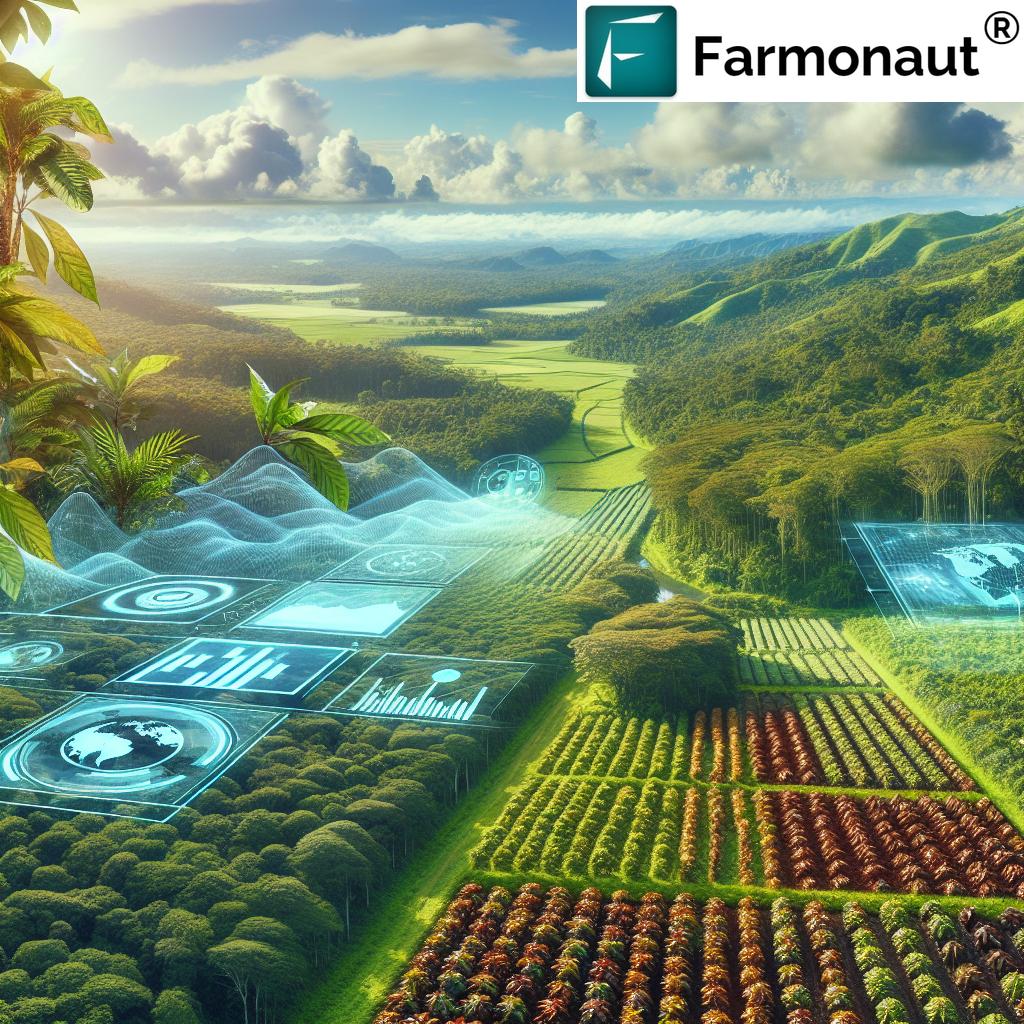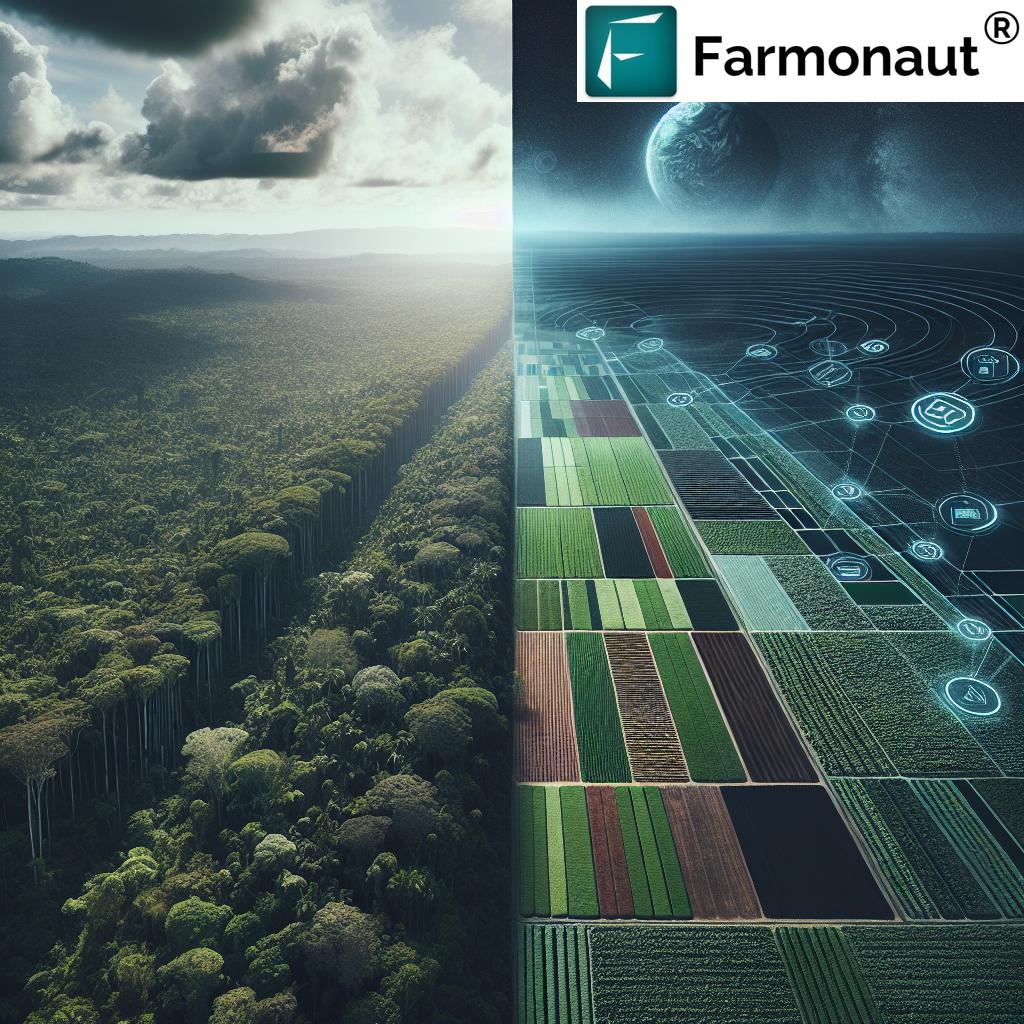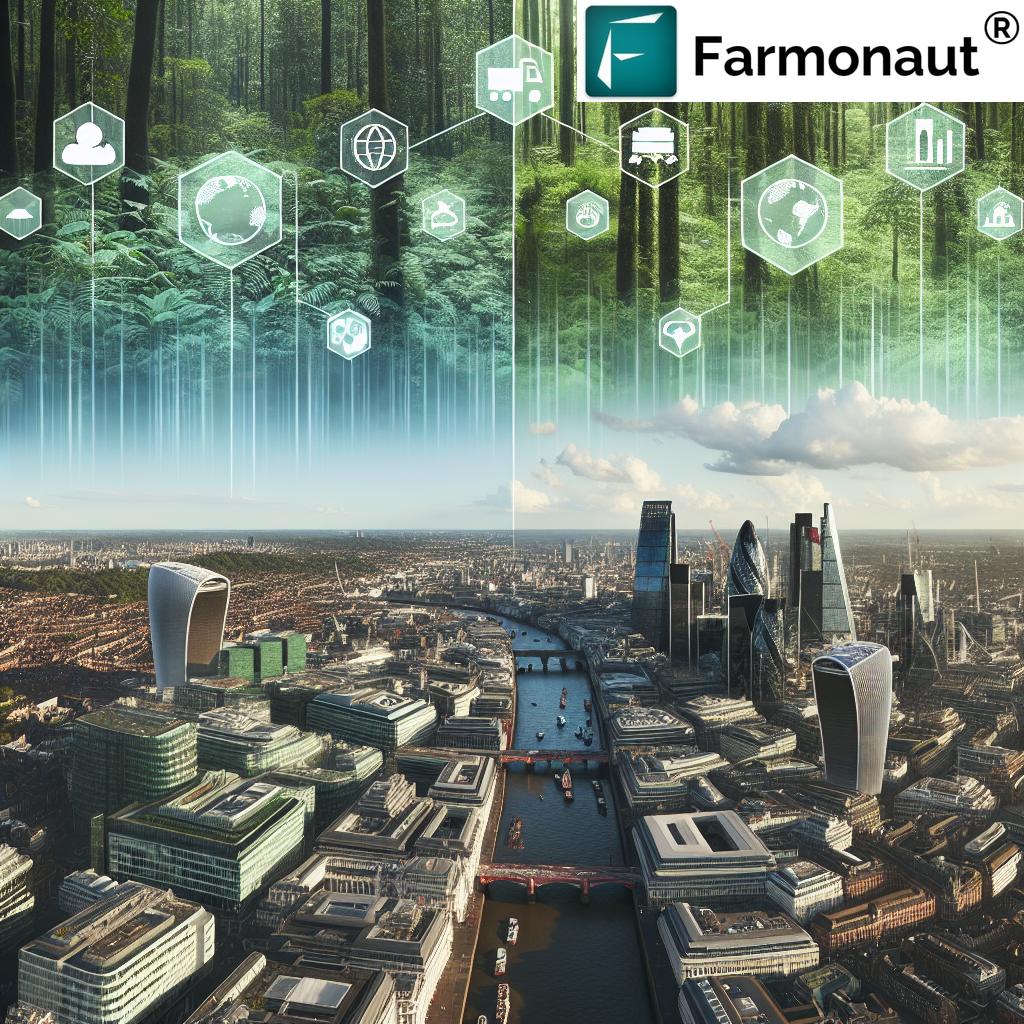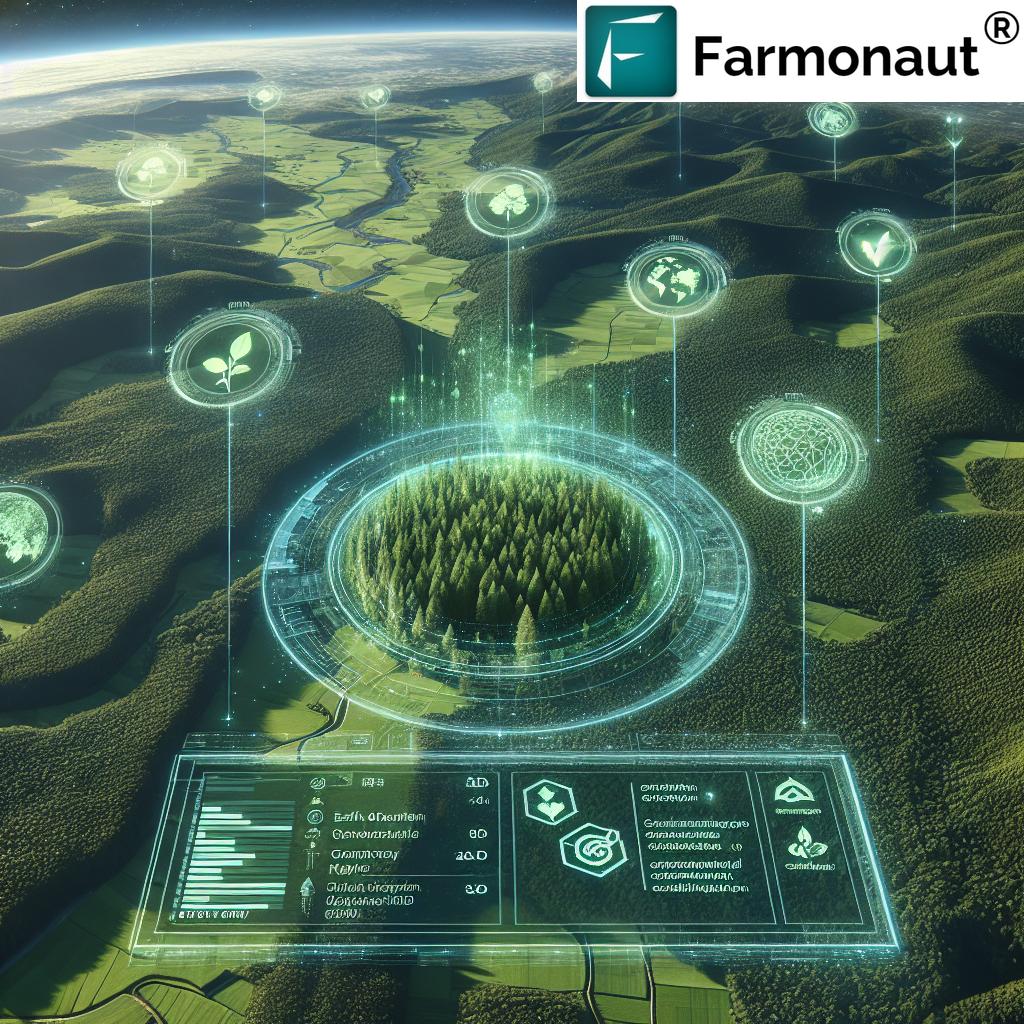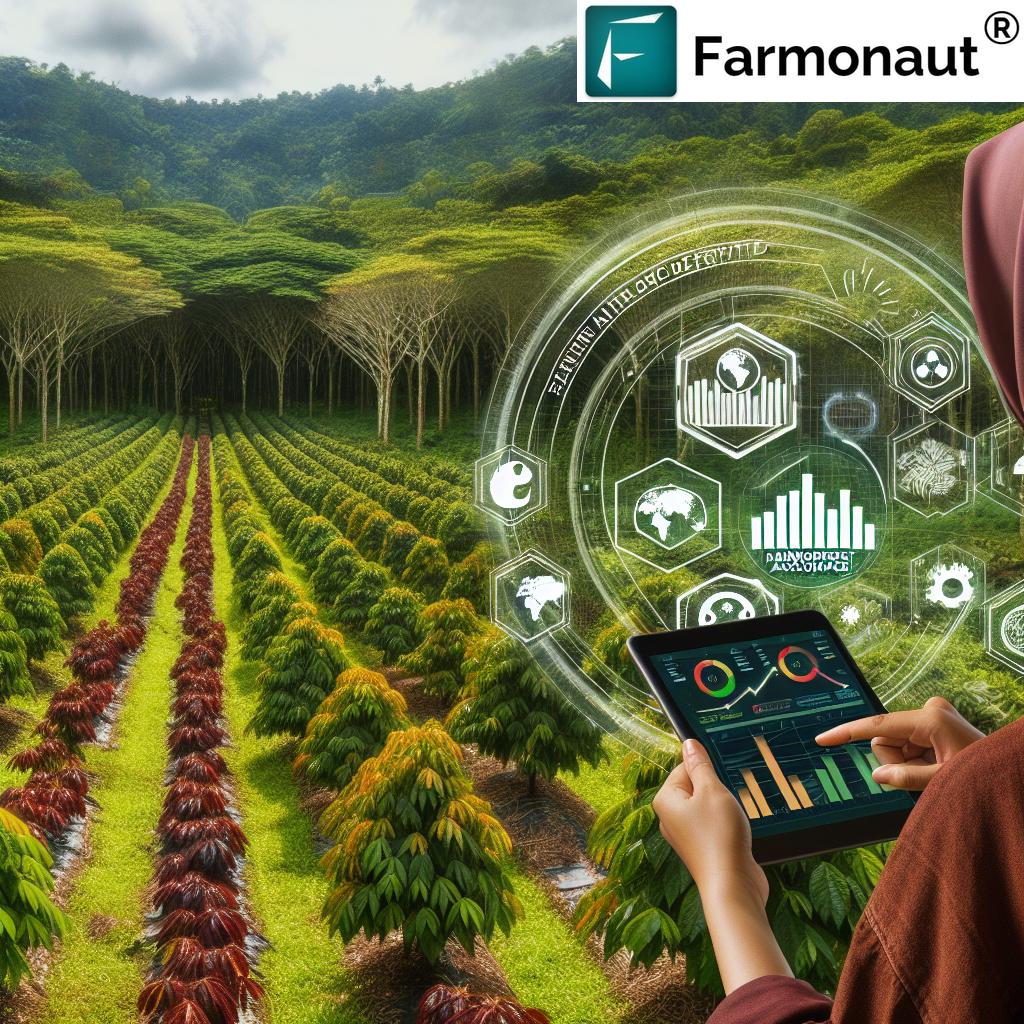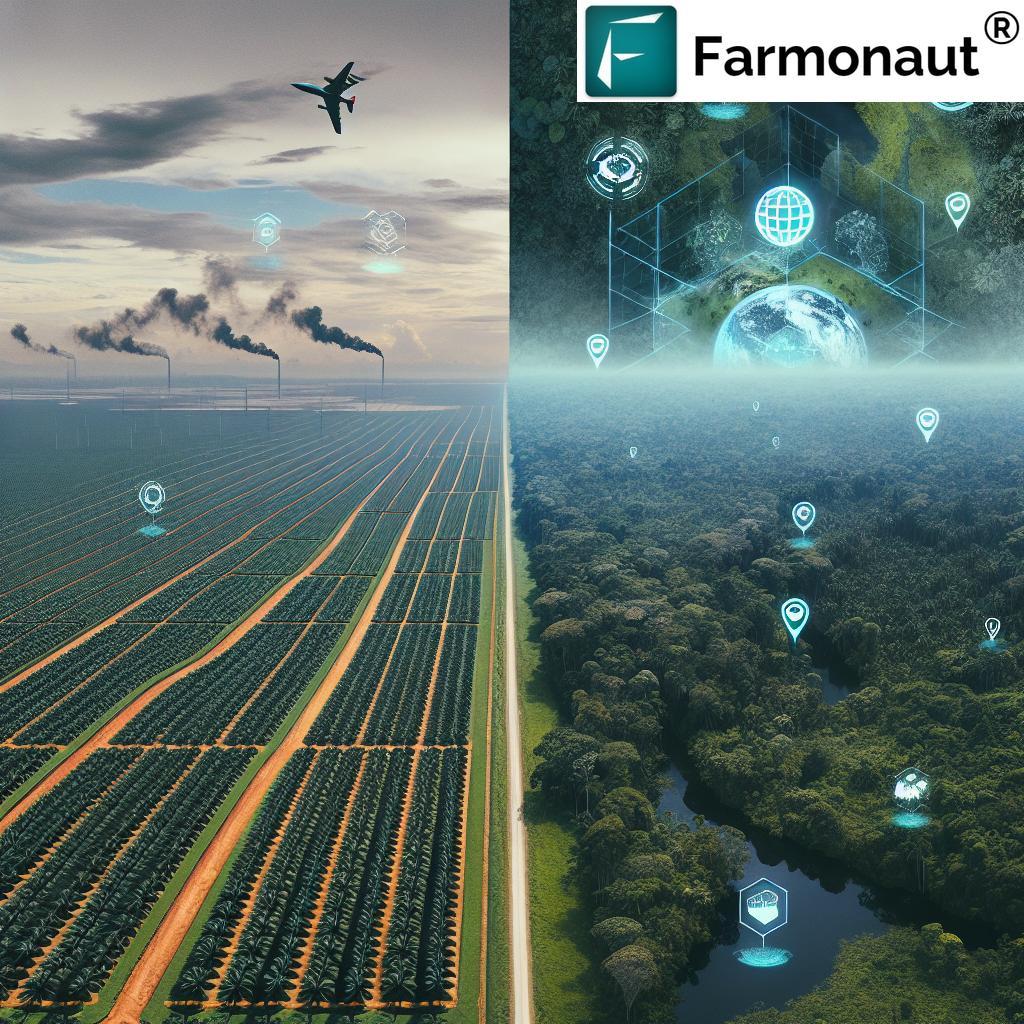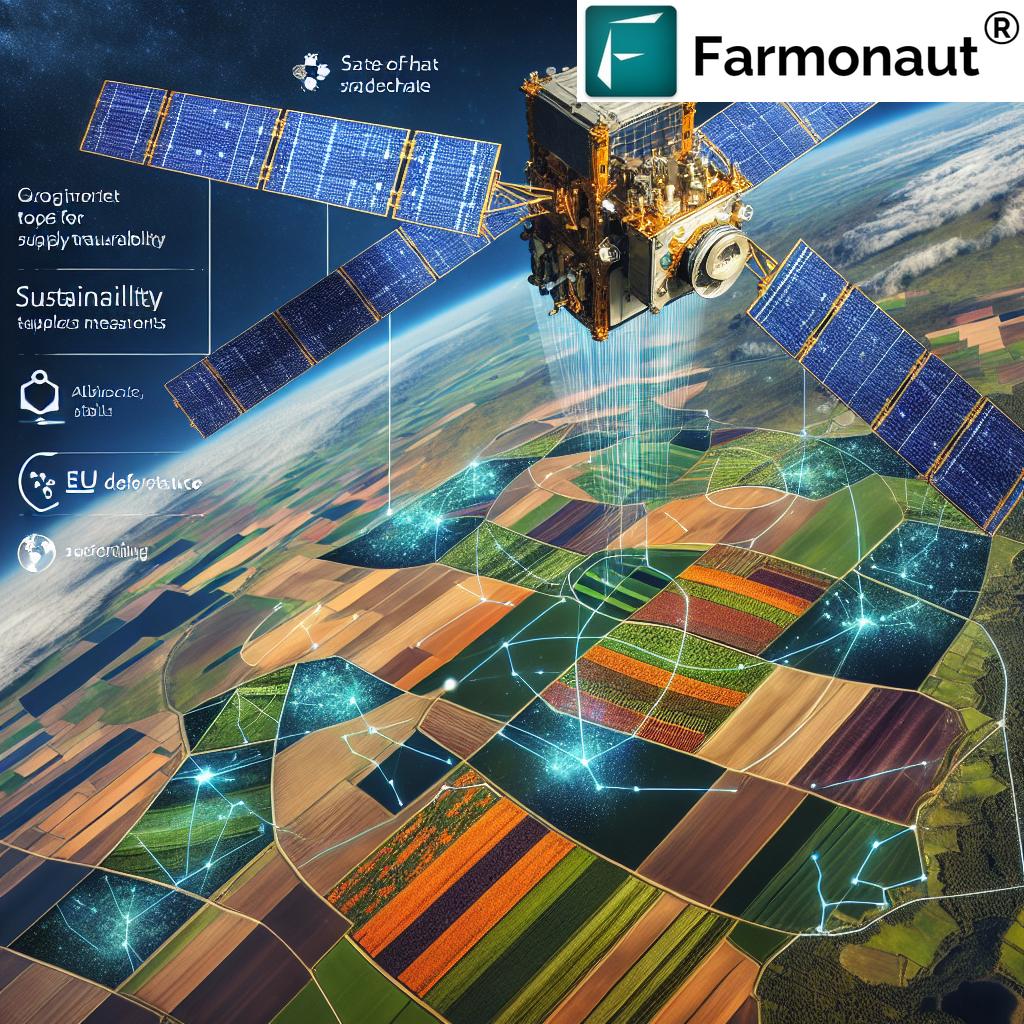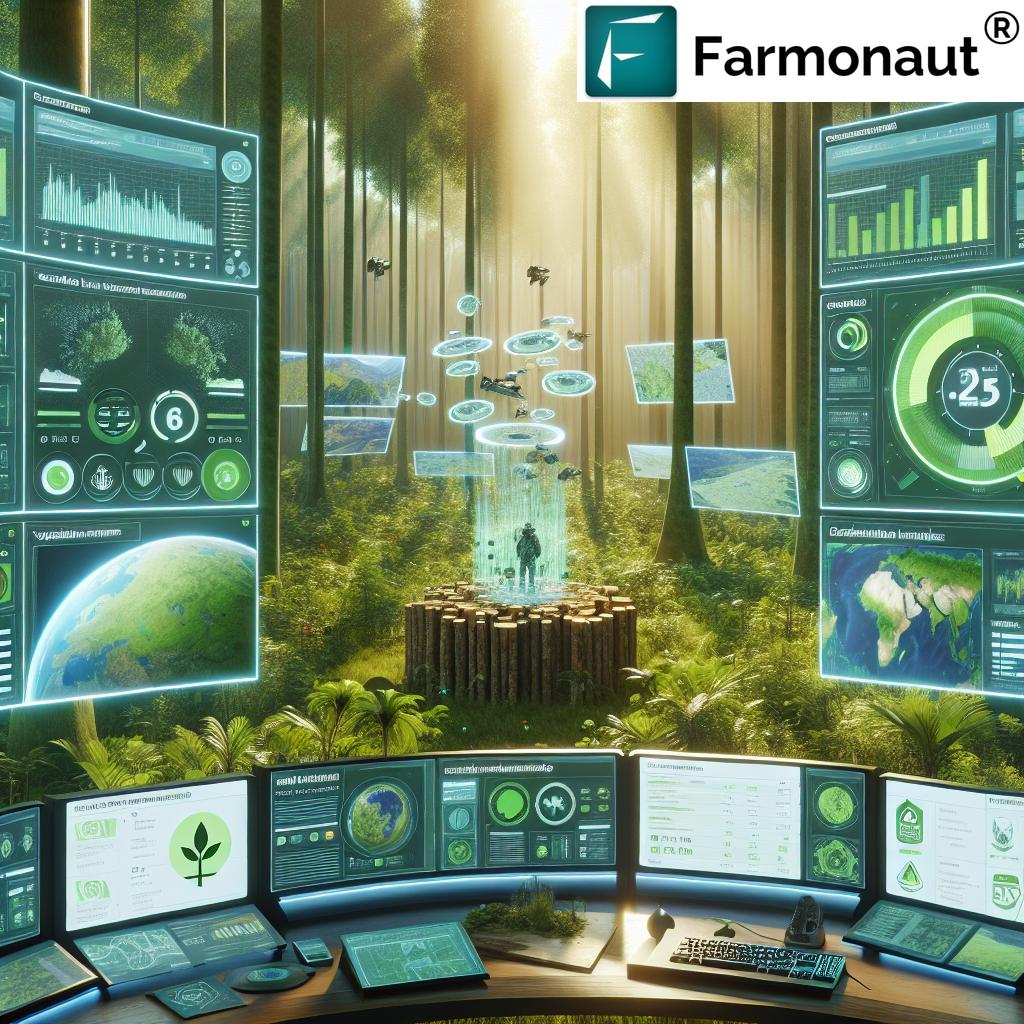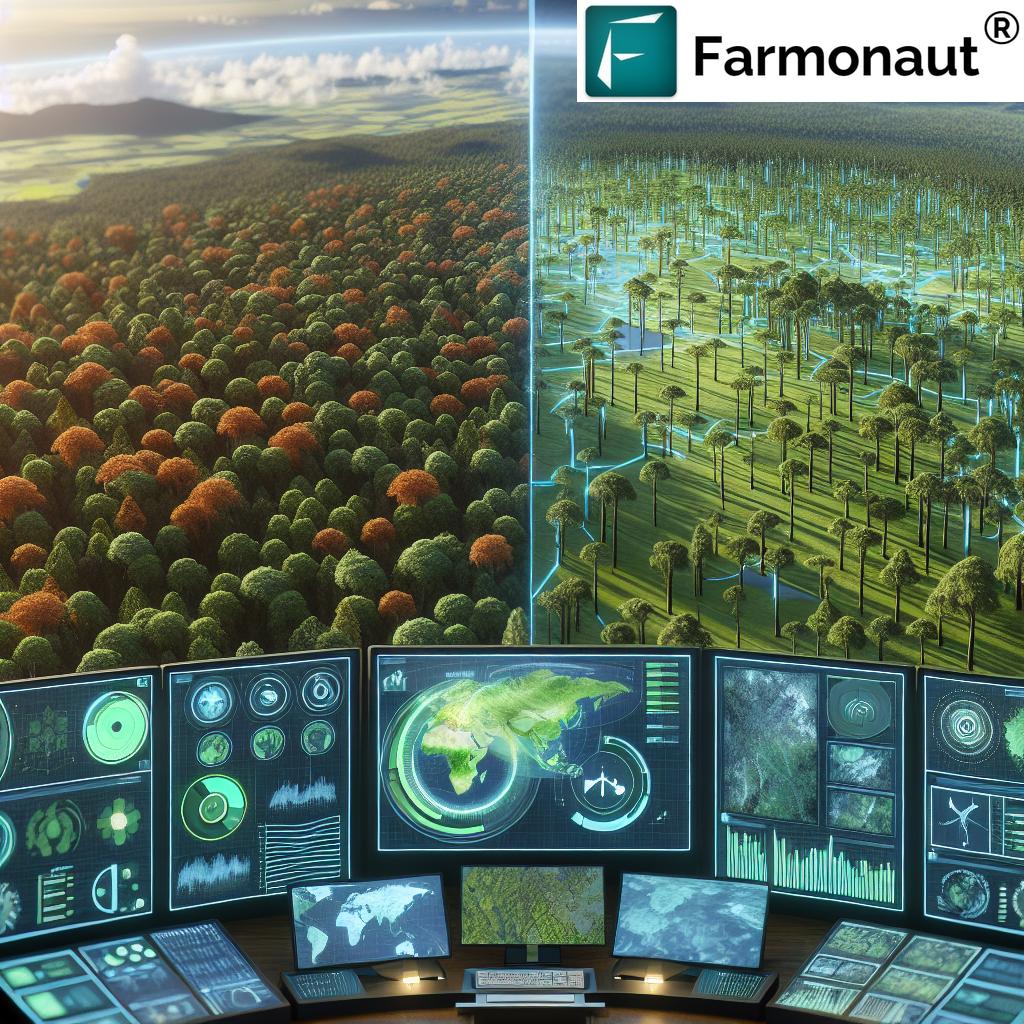Revolutionizing Sustainable Forestry: How Satellite Monitoring and Blockchain Ensure EU Deforestation Regulation Compliance
“Satellite monitoring can detect deforestation with up to 95% accuracy, revolutionizing sustainable forestry practices.”
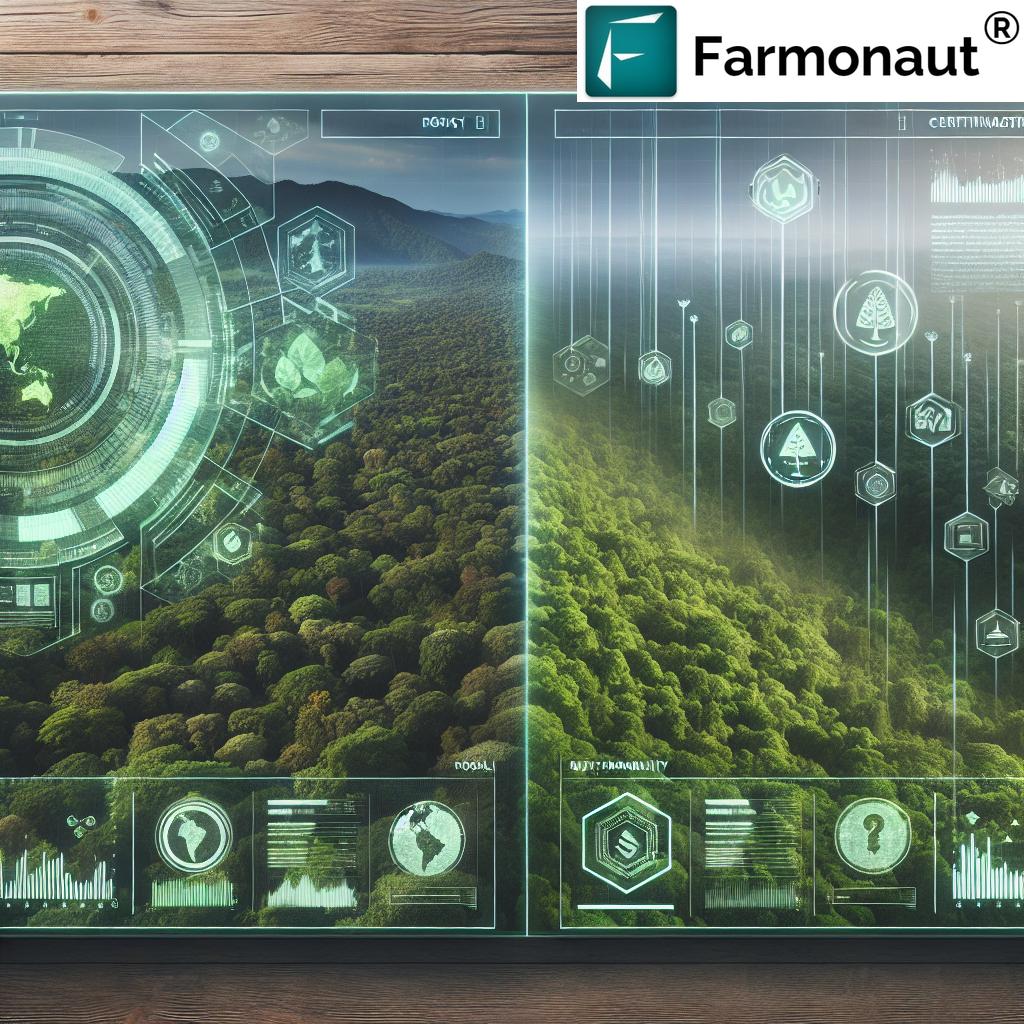
In the ever-evolving landscape of environmental conservation, sustainable forest management has emerged as a critical component in our global fight against climate change and biodiversity loss. As we delve into the intricate world of forestry, we find ourselves at the cusp of a technological revolution that promises to transform how we monitor, manage, and protect our precious forest resources. This blog post explores the groundbreaking advancements in satellite monitoring and blockchain technology that are reshaping sustainable forestry practices and ensuring compliance with the stringent EU Deforestation Regulation (EUDR).
The Imperative of Sustainable Forest Management
Forests are the lungs of our planet, playing a crucial role in maintaining ecological balance, supporting biodiversity, and mitigating climate change. However, the relentless pace of deforestation and forest degradation threatens these vital ecosystems. Sustainable forest management has thus become not just an environmental necessity but a global imperative.
At its core, sustainable forest management aims to balance the ecological, economic, and social benefits of forests. This approach ensures that forests continue to provide essential services such as carbon sequestration, water regulation, and habitat preservation, while also supporting livelihoods and economic development.
The EU Deforestation Regulation: A Game-Changer for Global Forestry
The European Union has taken a decisive step towards combating global deforestation with the introduction of the EU Deforestation Regulation. This landmark legislation, set to come into full effect by 2026, aims to ensure that products sold in the EU market do not contribute to deforestation or forest degradation.
Key aspects of the EUDR include:
- Due Diligence Requirements: Companies must conduct thorough due diligence to ensure their supply chains are deforestation-free.
- Traceability: Products must be traceable back to their point of origin, with clear information on production conditions.
- Risk Assessment: Operators must assess and mitigate risks of deforestation in their supply chains.
- Compliance Declarations: Companies must provide declarations of compliance for products entering the EU market.
The EUDR represents a significant shift in how businesses approach forest-related products, with far-reaching implications for global supply chains and forest management practices.
Satellite Monitoring: A Bird’s-Eye View of Forest Health
One of the most revolutionary tools in the fight against deforestation is satellite monitoring. This technology provides an unprecedented ability to observe and analyze forest cover and health on a global scale.
Here’s how satellite monitoring is transforming sustainable forestry:
- Real-time Deforestation Detection: Satellites can identify areas of forest loss almost as they occur, allowing for rapid response and intervention.
- Forest Health Assessment: Advanced sensors can detect changes in forest canopy, helping to identify areas of stress or disease.
- Carbon Stock Estimation: Satellite data can be used to estimate forest biomass and carbon storage, crucial for climate change mitigation efforts.
- Land Use Change Monitoring: Tracking changes in land use over time helps in enforcing policies and regulations.
Companies like Farmonaut are at the forefront of this technological revolution, offering cutting-edge satellite-based solutions for forest monitoring and management. Through their advanced platform, forestry managers and policymakers can access real-time data and insights, enabling more informed decision-making and effective forest stewardship.
Blockchain: Ensuring Transparency and Traceability in Timber Supply Chains
Blockchain technology is another game-changer in the quest for sustainable forestry and EUDR compliance. This distributed ledger technology offers unparalleled transparency and traceability in supply chains, addressing key challenges in the forestry sector.
Benefits of blockchain in forestry include:
- Immutable Record-Keeping: Every transaction and movement of timber products can be recorded and verified.
- Supply Chain Transparency: Stakeholders can trace the journey of wood products from forest to end-user.
- Fraud Prevention: The tamper-proof nature of blockchain helps prevent falsification of documents and illegal logging.
- Streamlined Certification: Blockchain can simplify and expedite the process of forest certification and compliance verification.
Farmonaut’s innovative blockchain solutions are particularly noteworthy in this context. By leveraging blockchain technology, Farmonaut provides a robust platform for tracing timber products, ensuring compliance with EUDR requirements, and promoting responsible sourcing practices.
Forest Certification Standards: The Backbone of Sustainable Forestry
Forest certification systems play a crucial role in promoting sustainable forest management and ensuring compliance with regulations like the EUDR. These systems provide a framework for verifying that forests are managed responsibly, considering environmental, social, and economic factors.
Key forest certification standards include:
- Forest Stewardship Council (FSC): A global system that promotes responsible management of the world’s forests.
- Programme for the Endorsement of Forest Certification (PEFC): An international non-profit organization dedicated to promoting sustainable forest management.
- Sustainable Forestry Initiative (SFI): A North American standard focusing on sustainable forestry practices.
These certification systems are continually evolving to incorporate new technologies and address emerging challenges. The integration of satellite monitoring and blockchain technology is enhancing the effectiveness and credibility of these certification processes.
The Role of Earth Observation in Sustainable Forestry
Earth observation technologies, particularly satellite-based systems, are revolutionizing our ability to monitor and manage forests on a global scale. These tools provide invaluable data for sustainable forest management, conservation efforts, and compliance with regulations like the EUDR.
Key applications of earth observation in forestry include:
- Forest Cover Mapping: Accurate, up-to-date maps of forest extent and type.
- Deforestation Alerts: Near real-time detection of forest clearance activities.
- Fire Monitoring: Early detection and tracking of forest fires.
- Biodiversity Assessment: Mapping of habitats and ecosystem diversity.
Farmonaut’s earth observation solutions offer forestry managers and policymakers powerful tools for monitoring forest health and assessing environmental impact. By leveraging satellite data and advanced analytics, Farmonaut provides actionable insights that support sustainable forest management practices.
Explore Farmonaut’s Satellite API
Sustainable Sourcing: Creating Deforestation-Free Supply Chains
Sustainable sourcing is at the heart of creating deforestation-free supply chains, a key requirement of the EUDR. This approach involves ensuring that raw materials, particularly those derived from forests, are obtained in a manner that does not contribute to deforestation or forest degradation.
Key elements of sustainable sourcing include:
- Traceability: Knowing the origin and journey of forest products.
- Risk Assessment: Evaluating potential environmental and social impacts of sourcing decisions.
- Supplier Engagement: Working with suppliers to improve sustainability practices.
- Certification: Sourcing from certified sustainable forests and operations.
Technologies like satellite monitoring and blockchain are invaluable in implementing effective sustainable sourcing strategies. They provide the transparency and traceability needed to ensure compliance with EUDR requirements and build consumer trust.
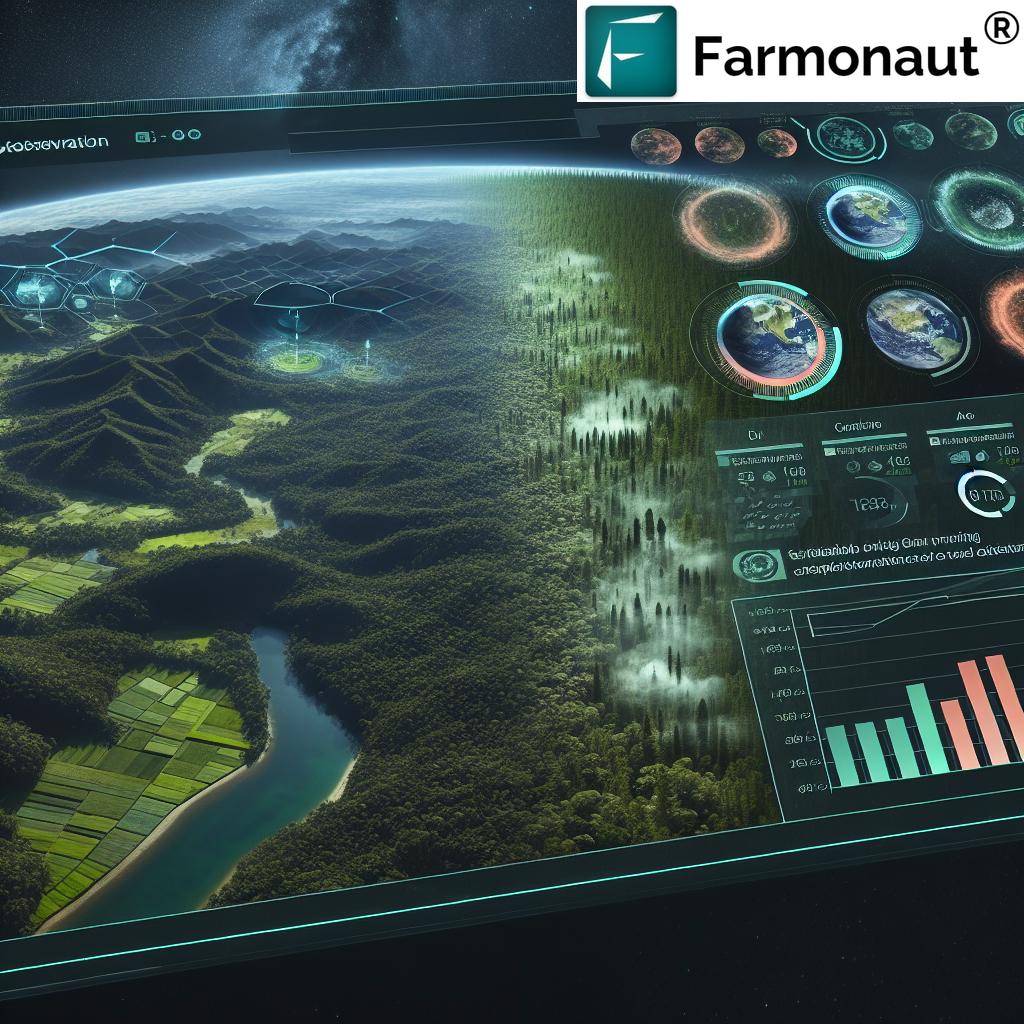
Responsible Wood and Palm Oil Production: Case Studies in Sustainable Forestry
Wood and palm oil production are two areas where sustainable forestry practices are particularly critical. Both industries have significant environmental impacts and are subject to intense scrutiny under regulations like the EUDR.
Sustainable Wood Production
Responsible wood production involves:
- Selective harvesting to maintain forest structure and biodiversity
- Reforestation and afforestation efforts
- Protection of high conservation value forests
- Community engagement and protection of indigenous rights
Sustainable Palm Oil Production
Key aspects of sustainable palm oil production include:
- Zero-deforestation policies
- Preservation of peatlands and high carbon stock areas
- Smallholder inclusion and community development
- Transparent supply chains and traceability
In both cases, technologies like satellite monitoring and blockchain play crucial roles in ensuring compliance with sustainability standards and regulations.
The Impact of EUDR on Global Businesses
“The EU Deforestation Regulation will impact over 1 million businesses globally by 2026, driving sustainable sourcing efforts.”
The EU Deforestation Regulation represents a significant shift in global trade policies, with far-reaching implications for businesses worldwide. As the regulation comes into full effect, companies across various sectors will need to adapt their practices to ensure compliance.
Key impacts of the EUDR on businesses include:
- Supply Chain Restructuring: Companies may need to reassess and potentially restructure their supply chains to ensure compliance.
- Increased Due Diligence: More rigorous checks and verifications will be required throughout the supply chain.
- Investment in Technology: Adoption of new technologies for traceability and monitoring will be necessary.
- Stakeholder Engagement: Closer collaboration with suppliers, local communities, and regulatory bodies will be crucial.
While these changes present challenges, they also offer opportunities for businesses to demonstrate leadership in sustainability and gain competitive advantages in an increasingly environmentally conscious market.
Farmonaut’s Role in Sustainable Forestry
Farmonaut stands at the forefront of the technological revolution in sustainable forestry. Our advanced satellite-based solutions and innovative use of blockchain technology provide powerful tools for forest managers, policymakers, and businesses striving to meet EUDR compliance requirements.
Key offerings from Farmonaut include:
- Satellite-Based Forest Monitoring: Real-time insights into forest health and deforestation risks.
- Blockchain-Enabled Traceability: Secure, transparent tracking of forest products throughout the supply chain.
- AI-Powered Advisory Systems: Advanced analytics to support decision-making in forest management.
- Carbon Footprint Tracking: Tools to monitor and reduce environmental impact in forestry operations.
By leveraging these technologies, Farmonaut empowers stakeholders in the forestry sector to implement sustainable practices, ensure regulatory compliance, and contribute to global environmental conservation efforts.
Explore Farmonaut’s API Developer Docs
The Future of Sustainable Forestry: Challenges and Opportunities
As we look to the future of sustainable forestry, we see both challenges and opportunities on the horizon. The implementation of regulations like the EUDR, coupled with advancing technologies, is set to reshape the forestry landscape.
Key challenges include:
- Balancing conservation with economic development
- Adapting to climate change impacts on forests
- Addressing illegal logging and forest degradation
- Ensuring equitable benefits for forest-dependent communities
Opportunities in sustainable forestry include:
- Development of new markets for sustainable forest products
- Innovations in forest management techniques
- Increased investment in forest conservation and restoration
- Enhanced collaboration between stakeholders in the forestry sector
By embracing technologies like satellite monitoring and blockchain, and adhering to rigorous certification standards, we can address these challenges and seize the opportunities for a more sustainable future.
EU Deforestation Regulation Compliance Timeline and Technology Solutions
| EUDR Compliance Milestones | Technological Solutions |
|---|---|
| 2025: Initial EUDR enforcement | Satellite Monitoring for Forest Cover Analysis |
| 2026: Full compliance required | Blockchain for Supply Chain Traceability |
| Beyond 2026: Ongoing monitoring | AI-powered Forest Health Assessment |
| 60% of affected companies expected to implement satellite monitoring by 2025 | |
Conclusion: Embracing Innovation for a Sustainable Future
As we navigate the complexities of sustainable forestry in the face of global environmental challenges and evolving regulations, the role of innovative technologies becomes increasingly crucial. Satellite monitoring and blockchain are not just tools for compliance; they are catalysts for a fundamental shift in how we manage and protect our forests.
The EU Deforestation Regulation serves as a powerful driver for change, pushing businesses worldwide to adopt more sustainable and transparent practices. While the road to full compliance may be challenging, it also presents unprecedented opportunities for innovation, collaboration, and positive environmental impact.
At Farmonaut, we are committed to supporting this transition by providing cutting-edge solutions that empower forestry stakeholders to meet regulatory requirements, improve sustainability practices, and contribute to global conservation efforts. By harnessing the power of satellite technology, AI, and blockchain, we can create a future where sustainable forestry is not just a goal, but a reality.
As we move forward, let us embrace these technological advancements and work together towards a world where our forests thrive, biodiversity flourishes, and sustainable practices are the norm. The journey towards sustainable forestry is complex, but with innovation, collaboration, and commitment, we can ensure a greener, more sustainable future for generations to come.
Frequently Asked Questions (FAQ)
- What is the EU Deforestation Regulation (EUDR)?
The EUDR is a legislation aimed at preventing products linked to deforestation from entering the EU market. It requires companies to conduct due diligence and ensure their supply chains are deforestation-free.
- How does satellite monitoring help in sustainable forestry?
Satellite monitoring provides real-time data on forest cover, health, and changes, allowing for quick detection of deforestation and more effective forest management.
- What role does blockchain play in forestry traceability?
Blockchain technology creates an immutable record of timber products’ journey from forest to end-user, ensuring transparency and preventing fraud in the supply chain.
- How can businesses prepare for EUDR compliance?
Businesses can prepare by implementing robust traceability systems, conducting thorough supply chain audits, and investing in technologies like satellite monitoring and blockchain.
- What are the benefits of sustainable forestry practices?
Sustainable forestry practices help preserve biodiversity, mitigate climate change, protect water resources, and support local communities while ensuring a long-term supply of forest products.




